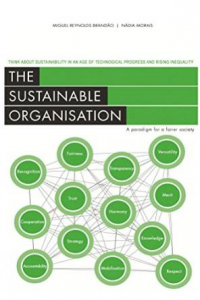 Looking at the top 100 organizations in the world, have you ever wondered which ones we’d really miss if they were to disappear? Give it a try. I bet you don’t choose the ones with the highest profits. You probably make your picks based on meaning. You probably chose the organizations that give us something we truly need, or add to our health and happiness, or take special care to protect resources for future generations.
Looking at the top 100 organizations in the world, have you ever wondered which ones we’d really miss if they were to disappear? Give it a try. I bet you don’t choose the ones with the highest profits. You probably make your picks based on meaning. You probably chose the organizations that give us something we truly need, or add to our health and happiness, or take special care to protect resources for future generations.
I started asking these types of questions when I became a family man. Thinking of the future awaiting my children and grandchildren, I grew alarmed by the increasing levels of instability and insecurity in the world today. I wondered why we’re so willing to shortchange the future for the sake of immediate gain, and I set about looking for a way to assess who the good guys are. Who’s doing things differently, and what impact are they having?
That’s the subject of my new book, The Sustainable Organisation: A Paradigm for a Fairer Society. In the book, I argue that while information technology has changed the world, organizations have not yet evolved to keep pace. Most groups are still mired in authoritative, competitive mindsets that breed inequality and do little to better our future.
So I propose an entirely new model for sustainable organizations, one that’s founded on transparency, merit and purpose. And because I’m mathematically inclined, I sought to describe the ideal with an algorithm, one that could help us measure and compare the real value and impact of any organization.
As I was writing, I came across SAS, well known as a great place to work. SAS is a prime example of a sustainable organization because the company understands the value of cooperation, recognition, fair rewards and meaningful goals. Dr. Goodnight is recognized by the business world as someone who’s earned his success by putting people first. When people are treated well, they turn out exceptional work.
Organizations who want that kind of success for themselves need a whole new business model – more cooperative leaders, new ways for people to collaborate and a way for their achievements to be measured by society. CEOs should be measured not by mere profits, but by the non-monetary value they create for the community at large, because change will come from the grassroots. Overcoming our tough problems is going to take less hierarchy and more collaboration. And that’s why this topic matters. Organizations are the building blocks of our society, so creating a sustainable world means creating more sustainable organizations.
So how do we identify who’s doing it right? That’s where my algorithm comes in. It’s called the Sustainable Organisation Index, or SORG. In my next post, I’ll cover it in more detail. In the meantime, please check out my book and learn what companies are included alongside SAS as leaders in the field of sustainability.
Learn more about life at SAS.

1 Comment
Pingback: Identifying sustainable organizations: How does it work? - SAS Voices